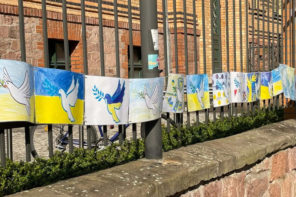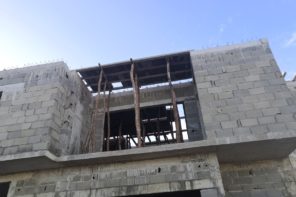This thematic thread evolved out of a workshop on Claiming justice after conflict. The stateless, the displaced and the disappeared at the margins of the state, co-organized by Yazid Ben-Hounet (Paris) and Judith Beyer (Konstanz). The presenters consisted of anthropologists and sociologists and convened for a full day on March 15, 2019, at the École des Hautes Études en Sciences Sociales (EHESS) in Paris. Shalini Randeria (Vienna) and Bertram Turner (Halle) provided thoughtful and constructive comments. The workshop was funded by a grant from the Collège d’Études Mondiales of the Fondation Maison des Sciences de l’Homme (FMSH) and constituted the first of several building blocks towards an interdisciplinary project devoted to a comparative, empirical study of statelessness, displacement and disappearance.
Comparing categories
What do statelessness, displacement and disappearance have in common? All three have become familiar and inescapable features of contemporary politics worldwide. While the UNHCR plans to “end statelessness by 2024”, there is no end to the production of stateless people in sight. Wars and other conflicts lead to internal and external displacement of refugees, sometimes without a chance to return, to migration more generally and also to individuals disappearing altogether. But statelessness might also be born out of state collapse; it can result from the active deprivation of citizenship; it can be a political tool governments wield to exclude “terrorists”, for example. But in contrast to displacement and disappearance, statelessness has at least the potential to acquire a positive connotation when it becomes juridically recognized by international and national law as a specific policy-relevant status. In such discourses, statelessness becomes endowed with rights, and recognized statelessness can offer safety by giving individuals who have been “stuck” or in “limbo”, as it is often called, a legal status in the society they are residing in. In a time when the promise of nation states seems unfulfilled, it can even be pursued as an appropriate political condition.
Currently, 70.8 million people have been forcibly displaced worldwide as a result of persecution, conflict, violence or human rights violations. UNHCR has calculated, that in 2018 the number of new displacements was equivalent to an average of 37,000 people being forced to flee their homes every day. Compared to statelessness, the category of “the displaced” seems more contingent and less normatively ambivalent: It greatly depends on an individual case how the life of a displaced person plays out: While some internally displaced people (IDP) have come to terms with a new way of life, especially if their home has been destroyed due to force majeure like environmental catastrophes, others have been waiting to “go home” for decades after a war or conflict, and live every day with a strong sense of estrangement and injustice.
Finally, “the disappeared” is a fundamentally negative category, affecting relatives who remain behind, activists and concerned institutions (as well as the researchers interested in investigating the phenomenon), and of course the disappeared themselves. To engage with the problem of “the disappeared” constitutes a struggle with the very category by trying to make the invisible visible. More than moving people “out of limbo” or back “in place”, as in the case of the stateless or the displaced, and rather than legally enshrining or accommodating a status, disappearance as a phenomenon is irreversible, even if there are globally increasing efforts, decades after, to retrieve and identify mortal remains, for example, or to commemorate those who have gone missing.
In order to draw out differences and similarities between the three categories statelessness, displacement and disappearance, the posts of this week will focus on the two cross-cutting themes of who can claim justice on whose behalf and the various ways in which uncertainty is being processed.
Making claims, processing uncertainty
The question of who can claim justice on whose behalf is first of all a question of representation, but also touches on scale, resources and access. In our case studies, we noticed that rather than focusing on individual actors, we all engaged with groups, with women, with youth or with the families of those left behind: While their numbers are often among the first that get counted, their stories are more difficult to gather. We consider such a decentering of a generic (and often male) individual a fruitful avenue into our future comparative research endeavors.
In the first post, Catherine Allerton engages with statelessness and the problem of the invisibility of migrant children and their families in Sabah, Malaysia. Their stories are about vulnerability as much as they are about resilience. Employing the concept of “documentary pragmatism,” Allerton explains that for her interlocutors, the goal is “being safe” rather than being documented.
In her post on Wednesday, Judith Beyer explores the relation between accountability and statelessness. First, by investigating the case of expert activists in Europe who have declared a fight against statelessness by trying to hold nation states accountable. Second, she looks at asylum cases in the UK where stateless individuals have to give accounts of themselves. She argues that while expert activists demand accountability from nation states, it is nation states who demand accountability from stateless people.
If people cannot make claims vis-à-vis the state at all, we pondered the question of what they might be doing instead. One option that Alice Wilson explores in her post on Thursday is a shift in the very discussions people are having about disappearance: in her case in the context of Oman’s southern Dhufar region. She argues that the possibilities for claims-making, and its potential success, vary within different political environments. A liberal democracy may offer freedom of expression to advance claims, but may not necessarily guarantee that the state will respond. Making claims in response to the government’s violence during the Dhufar war is out of bounds in public discussion in Oman, Wilson argues.
We also asked what would be a minimal requirement for a case of justice to be made. If not through the justice system which is structurally disposed against the disappeared, what are other pragmatic ways in which constrained and oppressed actors manage to establish justice by, for example, at least retaining a sense of moral worth? Turning to divinity and religious belief is one of the possibilities which Siri Lamoureaux explores in her Friday post on displaced Nuba women in Sudan. Other options are the public shaming and accusing of perpetrators by the so-called “Nubian Queens.” In light of the recent events her post bears particular urgency.
How the three categories of statelessness, displacement and disappearance relate to one another and how and into what ways they evolve and transform will be the subject of our future research. That they are connected and can blend into each other will be shown in this thematic thread.










